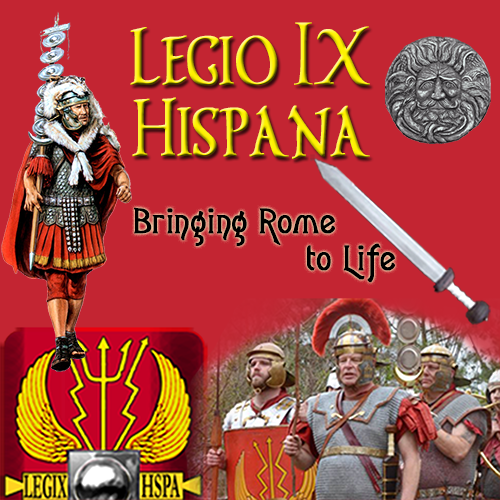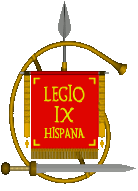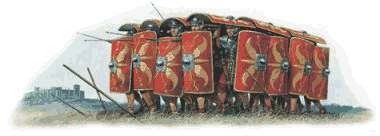Furca (carry pole)
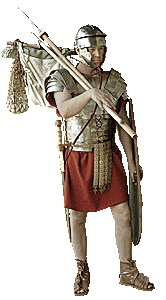 Frontinus, Strat. 4.1.7, explains that Marius
introduced the method of bundling military equipment and suspending it from forked poles (a
furca). We suppose a handle with a cross-bar could loosely be described as "forked."
But Festus claims that "aerumnulae are what Plautus calls the little forks
(pl. furcae) to which travelers attach their baggage in order to carry it."
Frontinus, Strat. 4.1.7, explains that Marius
introduced the method of bundling military equipment and suspending it from forked poles (a
furca). We suppose a handle with a cross-bar could loosely be described as "forked."
But Festus claims that "aerumnulae are what Plautus calls the little forks
(pl. furcae) to which travelers attach their baggage in order to carry it."
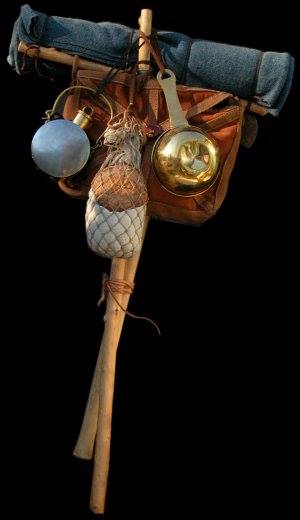
What's in a Name?
So the real name for your forked pole may be an aerumnula. Sir Ian Richmond noted that this method of suspending gear from a pole is shown only once on Trajan's Column, and suggested that either (a) the artist illustrated the kit in this way to show all the different bits and pieces that were normally wrapped up out of sight, or (b) the men in this scene were marching to a kit inspection.
Reorganization Brings Change
Around 107 BC, the Roman army had undergone a new reorganization known as the Marian Reforms (initiated by Gaius Marius, a statesman and general of the Roman republic) designed to improve the efficiency of the legions. Among these reforms was a change in the way the soldiers equipment was handled. Every legion had a baggage train of 500-550 mules, or about 1 mule for every 10 legionaries. To keep these baggage trains from becoming too large, and to promote greater independence in each individual legionary, Marius decreed that each man had to carry as much of his own equipment as he could, including his own armor, weapons, tools and 15 days' rations equaling about 50-60 pounds of load total in a pack called a sarcina. Soldiers were then issued furca, a "T"-shaped pole about 4 feet tall (this has been interpreted much longer by some groups, but in use, we have the shorter pole to be much easier to carry and control.) with a crossbar c. 20" long to carry their loads on their shoulders. The soldiers were nicknamed muli Mariani (Marius' Mules) due to the amount of gear they had to carry themselves.
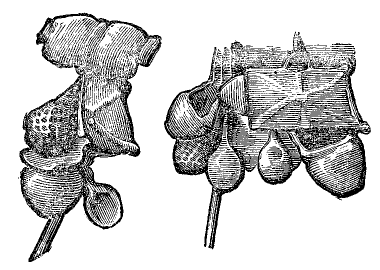
Left: Drawings made of details from Trajan's Column, showing the pack.
To Carry
While on the march to and from the war zone, the Legionary soldier carried a wide assortment of personal gear and tools in a pack called a sarcina which was suspended from a furca, a "T"-shaped pole about 4 feet tall with a crossbar c. 20" long.
This is the marching pole that carries the Roman Legionary's kit. After the reforms of Marius in the Republic legionaries were expected to carry a sizeable amount of their own kit thus reducing the size of the baggage train. We see these poles on Trajan's column held high above the backs of the troops much like a hobo might be imagined to carry his bag. Experimental reconstructions done under living archaeology conditions have shown this to be highly impractical and this depiction is thought by most (read anyone who has tried it) to be artistic license used to show the items more clearly. In practice it is likely that the gear rested on the mile's back, the pole providing an excellent balance as use has shown.
Left: Sarcina with furca made from tree branches — probably more authentic than
the usual converted "closet rod" types we see.

